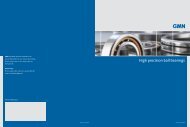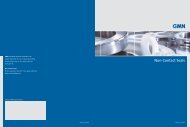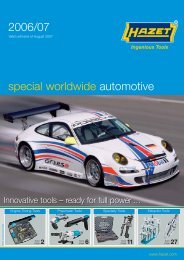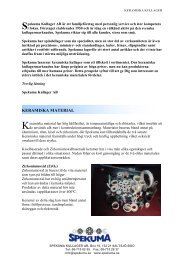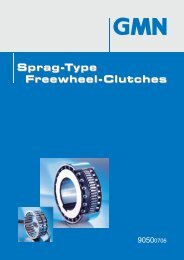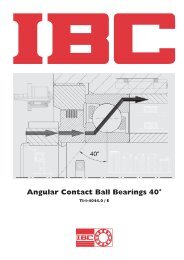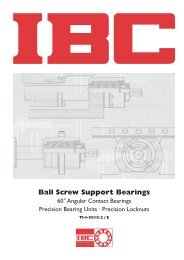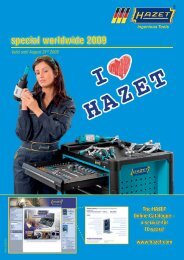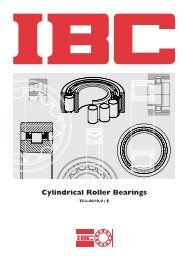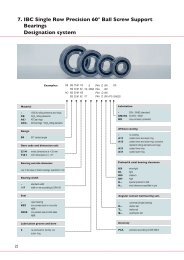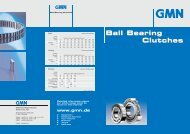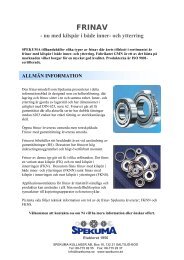Create successful ePaper yourself
Turn your PDF publications into a flip-book with our unique Google optimized e-Paper software.
Bearing Capacities<br />
Static Bearing Capacity<br />
In rolling bearing technology we talk about<br />
the static bearing capacity when the ball<br />
bearing is loaded while stationary or during<br />
slow swinging movements. The calculations<br />
are made according to DIN ISO 76.<br />
Basic Static Radial Load Rating C or<br />
The basic static radial load rating is the static<br />
radial load which corresponds to a calculated<br />
contact stress of 4200 MPa at the centre of<br />
the most heavily loaded rolling element /<br />
raceway contact.<br />
Static Equivalent Radial Load P or<br />
The static equivalent radial load is the static<br />
radial load which would cause the same<br />
contact stress at the centre of the most<br />
heavily loaded rolling element / raceway<br />
contact that occurs under the actual load<br />
conditions.<br />
Calculating the static equivalent radial load:<br />
P or =X o · F r + Y o · F a<br />
X o = 0.6<br />
Y o = 0.5<br />
F r = greatest radial load occurring [N]<br />
F a =greatest axial load occurring [N]<br />
If the calculation gives a value, P or < F r ,<br />
P or = F r should be set.<br />
Permanent Deformation<br />
Permanent deformation on raceways and<br />
rolling elements even occurs when a<br />
stationary ball bearing is only loaded<br />
moderately.<br />
Experience shows that a deformation of<br />
0.0001 x rolling element diameter on the<br />
most highly loaded point of contact between<br />
raceway and rolling element will not<br />
noticeably effect the function of the ball<br />
bearing.<br />
Even greater deformation is justifiable if the<br />
ball bearing is running at low speed and the<br />
requirements for noise are not high. On the<br />
other hand only slight permanent deformation<br />
is allowed if the noise and friction<br />
requirements are particularly stringent.<br />
Dynamic Bearing Capacity<br />
The dynamic bearing capacity is the stress on<br />
a rotating ball bearing. The additional term<br />
“dynamic” indicates the operating condition<br />
of the bearing not the effect of the load.<br />
The calculations are made according to<br />
DIN ISO 281.<br />
Basic Dynamic Radial Load Rating C r<br />
The basic dynamic radial load rating for radial<br />
ball bearings is that constant radial load<br />
which a sufficiently large number of<br />
apparently identical ball bearings could<br />
theoretically endure for a basic rating life of<br />
one million revolutions.<br />
Dynamic Equivalent Radial Load P r<br />
The dynamic equivalent radial load for radial<br />
ball bearings is that constant radial load<br />
under the influence of which a rolling bearing<br />
would have the same life as it will attain<br />
under the actual load conditions.<br />
The DIN load ratings are given in the ball<br />
bearing tables. The actual load ratings can<br />
deviate depending on the ball bearing type.<br />
The load ratings are approx. 30% lower for<br />
hybrid ball bearings than for comparable steel<br />
ball bearings.<br />
Please ask our technical support for the exact<br />
load ratings.<br />
50




